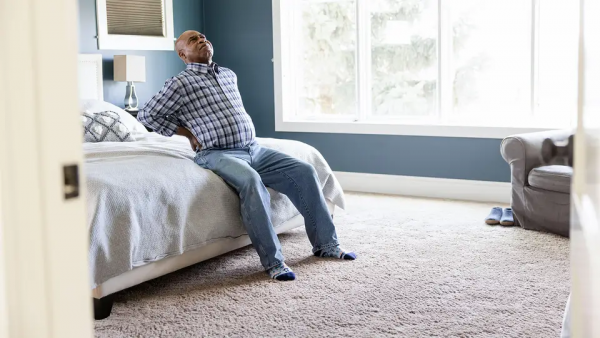VERDICT Trial: A Q & A with Christine Goertz, DC, PhD
Christine Goertz, DC, PhD, is a professor in musculoskeletal research at Duke University School of Medicine in the Department of Orthopedic Surgery, where she is also the Director of System Development Coordination for Spine Health there. In addition, Dr. Goertz is currently the Chairperson of the Board of Governors of the Patient Centered Outcomes Research Institute, also called PCORI. PCORI takes a stakeholder-driven approach to its research, which includes involving patients and their caregivers in helping identify the most important types of questions to research. Dr. Goertz’s research emphasis is in large pragmatic clinical trials and health services research that look at nonpharmacological approaches for pain management with an emphasis on low back pain.
Cynthia Long, PhD, PStat, is the Dean of Research at Palmer College of Chiropractic, as well as Director of Office of Data Management & Biostatistics at Palmer Center for Chiropractic Research. Dr. Long, a biostatistician, works with investigators, clinical project managers, biostatisticians and data analysts to design, implement and analyze data for research studies of nonpharmacological therapies for people with chronic pain.
PMC interviewed Dr. Christine Goertz to talk about the VERDICT trial, on which she is Co-PI with Dr. Cynthia Long.
A: The Veterans Response to Dosage in Chiropractic Therapy (VERDICT), trial is focused on “dosing” of chiropractic services. This study addresses an important area in both health policy and clinical practice since we really don’t know how many chiropractic visits the average person with chronic low back pain needs in order to achieve an optimal outcome. We plan to answer this question in terms of short term dosing (less than 10 week) and longer term dosing (up to one year). Short term outcomes of interest are focused on change pain-related disability, pain interference and pain intensity, while longer term outcomes include days in pain or increased episodes of low back pain.
A: We know that veterans have high rates of musculoskeletal disease, largely led by low back pain. This, when combined with their high medication usage and the risks of long-term use of opioids make the study of safe and effective alternatives especially important.
A: Many primary care physicians feel that they are not able to spend as much time as they would like with LBP patients. In addition, they report a lack of clarity on both non-drug treatment options and current research-based guidelines. Right now, though, I believe one of the biggest barriers to transformation in spine care delivery has to do with payer policies that provide greater incentives for interventional approaches and prescription medications than conservative alternatives such as spinal manipulation, acupuncture, cognitive behavioral therapy and yoga.
I think that until we see widespread adoption of payment models placing an emphasis on conservative care by rewarding both patients and clinicians for engaging in guideline-concordant treatment approaches we’re going to continue to struggle with delivering optimal care for low back pain. I have some hope that this is changing. JAMA came out recently with an article citing low back and neck pain as the number one healthcare spend in the United States—an amazing $134 billion in direct costs. When you consider the fact that much of that cost is likely associated with treatments for which the risk may outweigh the benefits for many patients, I think there’s a real opportunity for the entire health system to take another look at low back pain treatment approaches and how we can all do a better job.
A: It really depends on the person. If a person is self-motivated, it’s pretty easy to teach them how to do exercises, yoga or other self-care strategies. If a person simply is not going to engage in these approaches unless they are working with a physical therapist or a chiropractor to inspire compliance, then such guidance plays an important role. The thing you have to remember about exercise is that it’s not one of those things that you do for a couple of weeks and then you are done. It’s something that you need to get in the habit of engaging in on a regular basis over the long term to have a sustained impact on back pain.
A: I am the founder and CEO of the Spine Institute for Quality (IQ), which started a clinical data registry for conservative spine care about seven years ago with an initial focus on doctors of chiropractic. We have had a lot of difficulty getting chiropractic practitioners to voluntarily participate in clinical data registries when they’re not being required to do so by payers. Even if payers are providing financial incentives for providers to participate, we’re still having difficulty with that participation because data registries can be complex and involve laborious extra steps in data entry. The majority of providers would have to enter the data in twice—once in the patient’s electronic health record and then also into the clinical data registry. While there are some workarounds, providers have to be comfortable and adept with the technology in order to make that happen. This creates significant barriers currently; however, I believe that in the relatively near future, clinical data registries are going to be a cost of doing business for all clinicians.
A: When we designed the VERDICT trial, we thought a lot about the evidence-based treatments that should be considered within the chiropractic “toolbox” and identified myofascial therapies, stretching, exercise, neural mobilization, and lifestyle management advice. When COVID-19 began to impact the potential for in-office visits, we were able to work with our recruitment sites to think about what virtual care for chiropractic might look like. One of our first VERDICT trial papers outlines evidence-based treatments that are commonly used by doctors of chiropractic (click here to access the paper).
One of the exciting outcomes from this process is that carefully-designed virtual care has applicability not only during a pandemic, but also in reaching rural and underserved areas where people have a difficult time accessing pain care, even during non-pandemic times. As a result, many patients end up in urgent care or in the emergency room due to low back pain when they would be best served by more conservative care options. I look forward to an environment where such patients have access to a telehealth appointment and are able to talk with a doctor of chiropractic or a physical therapist to learn what care was warranted, without a long drive—and before pain intensity escalates to prompt an emergency room visit. I think this approach would prevent a significant number of emergency room and urgent care visits. There’s great potential for virtual care and I am excited to have the opportunity to collect the data we need to determine if people appear to have different outcomes, depending on whether their visits are in-person versus virtual. This preliminary data has the potential to inform future work focused on this question.
A: COVID-19 has delayed our ability to start recruitment for the trial, both because the VA was not allowing any clinical research for a period of time, and then due to limitations on the number of visits allowed by the chiropractic clinic sites we targeted for this particular trial. However, these events have also challenged us to consider virtual care in the ways I spoke about earlier. which may lead to further research opportunities in the future.
A: Communication and multi-stakeholder engagement is incredibly important in health care delivery in general, but it’s even more important with people who have low back pain. We know that people who are more frightened by their pain can sometimes have worse outcomes. Helping patients be more knowledgeable about the causes of and evidence-based treatment options for their pain can paradoxically lead to less pain in the future. Patient education is really important, as is ensuring that clinicians understand what language can actually help support patient improvement, as opposed to frightening them more.
A: The truth is that there is not very much in the conventional medical toolbox for early episodes of acute low back pain, so it is essential that medical doctors and other providers are up to date on what the guidelines currently recommend. I had the opportunity to be involved in a number of studies that Gallup conducted regarding attitudes and beliefs of people who have low back and neck pain. When we asked this group which providers they thought were the safest and most effective, they indicated that physical therapists and chiropractors; but when we asked them who would they would want to see first, over half said that they’d prefer to see a medical doctor. It is critically important that medical doctors understand coordinated care options for low back pain and are able to provide access to that care for their patients.
For instance, the American College of Physicians currently recommends that patients and their clinicians consider conservative care such as acupuncture, massage, yoga, Tai Chi and spinal manipulation before trying any prescription medication for low back pain. Physicians don’t necessarily learn about these integrative treatments in medical school or how to facilitate patient access to that type of care. There are a number of questions I recommend that medical doctors ask doctors of chiropractic before they start referring patients to them. These include: What would be the optimal number of visits for low back pain? and What kind of chiropractic techniques are commonly used in your practice? I would probably pick somebody who answered the first question by saying, “Well, it really depends on the patient condition, but often we start with somewhere around six visits, and then assess and decide what care is warranted after that,” versus someone who said, “I think we need to see every patient 50 times.”
A: I think it’s important for a number of reasons. When you’re conducting a large study like this, it can be a lonely and complicated job so the opportunity to connect with other scientists who are going through the same thing at the same time is extremely helpful. It also gives us a forum to discuss our studies with outstanding scientific experts across a spectrum of expertise that is especially relevant in the conduct of pragmatic clinical trials. Both the Steering Committee and the Work Groups provide important input on various design issues, problem solving, and more. Additionally, the Collaboratory also allows us the opportunity to synergize across the involved studies, and to harmonize on creating minimal datasets, which is incredibly important because it gets us closer to a data registry for pain management by including far more people than any of us would be able to look at with just our own independent studies.
Finally, it provides an opportunity to work together with outstanding scientists on areas of common interest. For instance, fellow PMC PIs Steven George, Nicki Hastings, and I recently submitted a paper looking at virtual treatments for pain management. The PMC brings together scientists with similar interests that you might not have had the opportunity to work with previously. Those collaborations mean that we’re more likely to have an impact on future work because we’re able to spend more time together, get to know each other better, and learn what synergies exist given mutual research interests and areas of expertise.
Working Documents & Other Information
We’re Treating Low Back Pain All Wrong
The PMC offers a unique opportunity to fill important knowledge...
Read MorePathways for Managing Low Back Pain
Four PMC PIs note a need for better pathways for...
Read MoreVERDICT Trial Study Group Develops Clinical Decision Aid for Managing Low Back Pain
Cristine Goertz, DC, PhD, Co-PI of the PMC VERDICT trial...
Read MoreChiropractic Care for Veterans: A Pragmatic Randomized Trial Addressing Dose Effects for cLBP (VERDICT trial)
The VERDICT project evaluates patient and clinician perceptions of non-specific...
Read More



